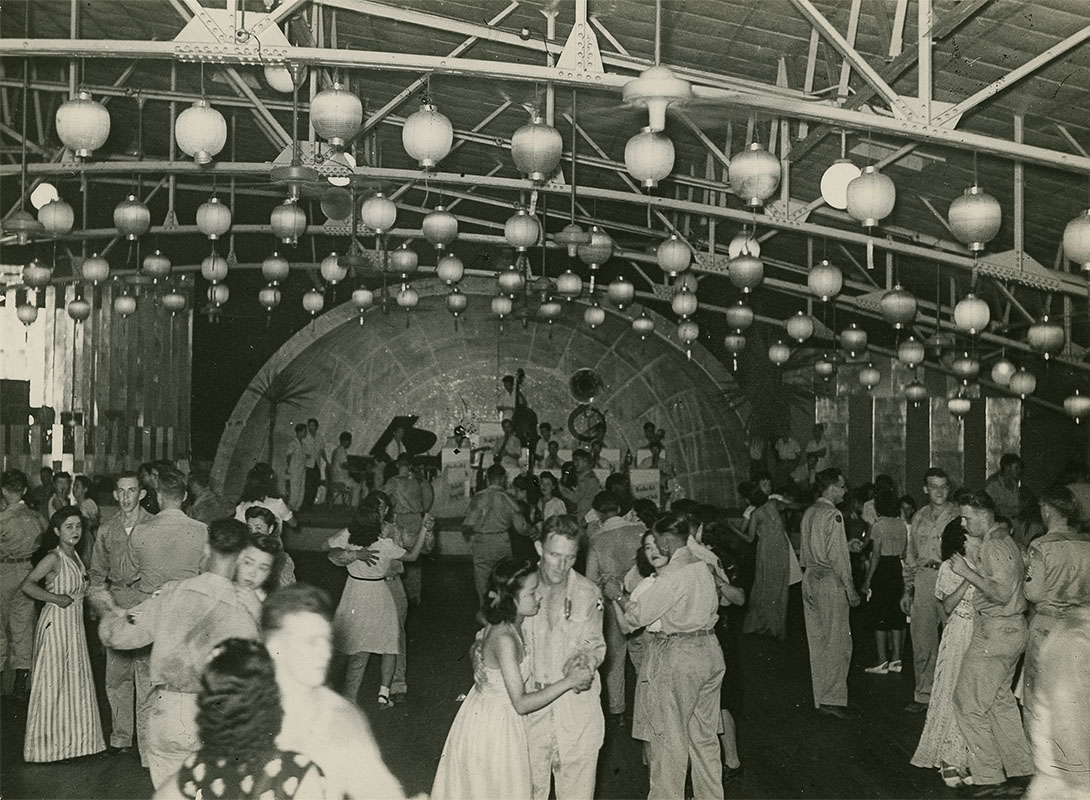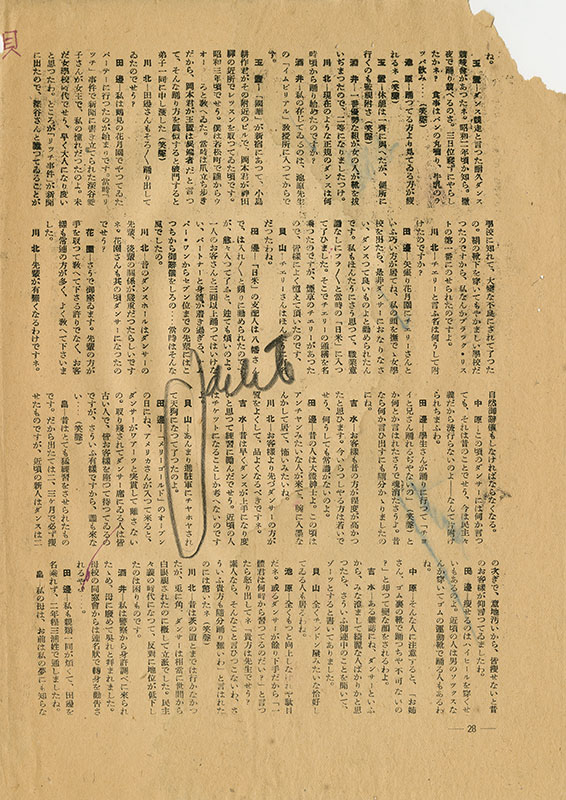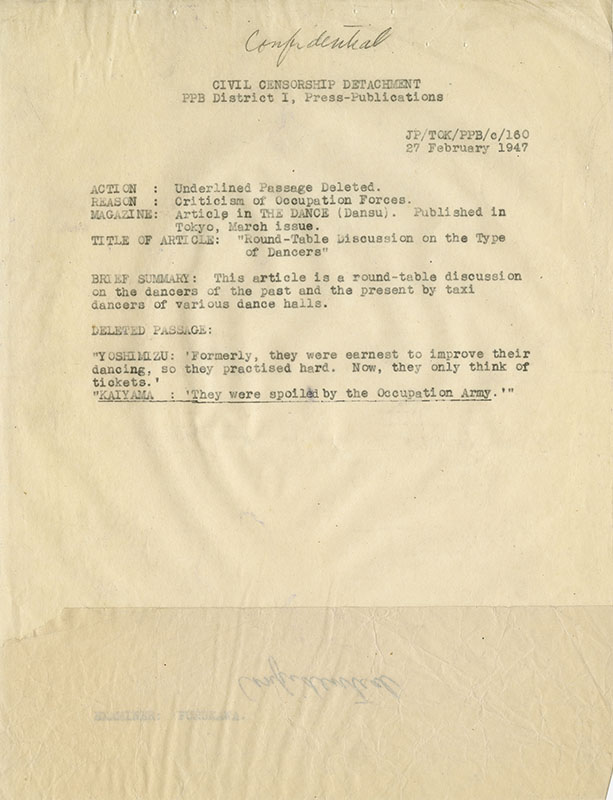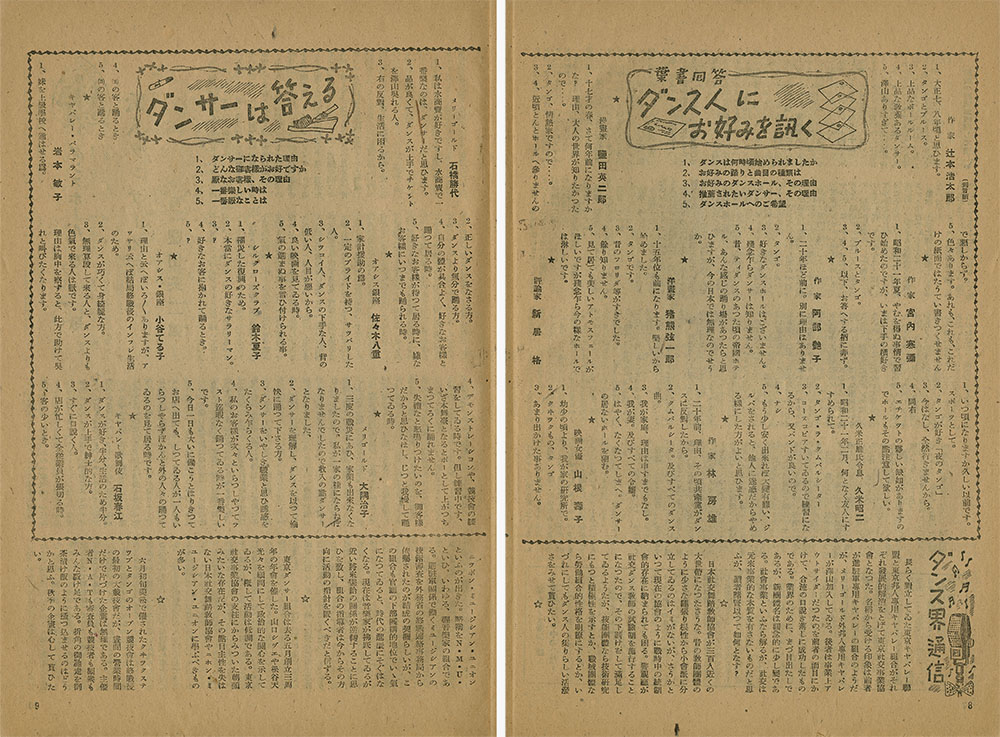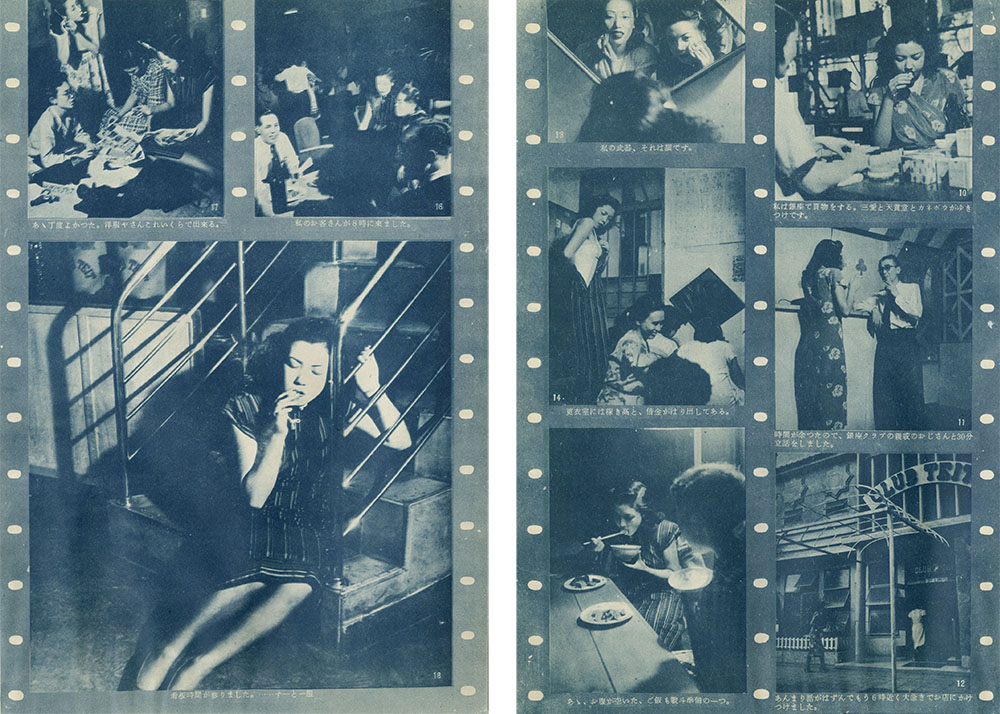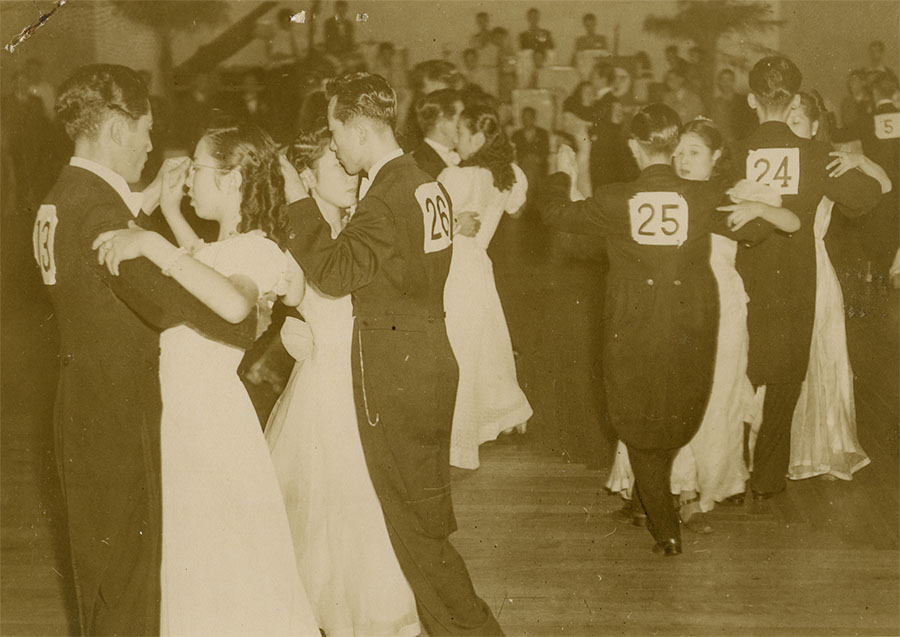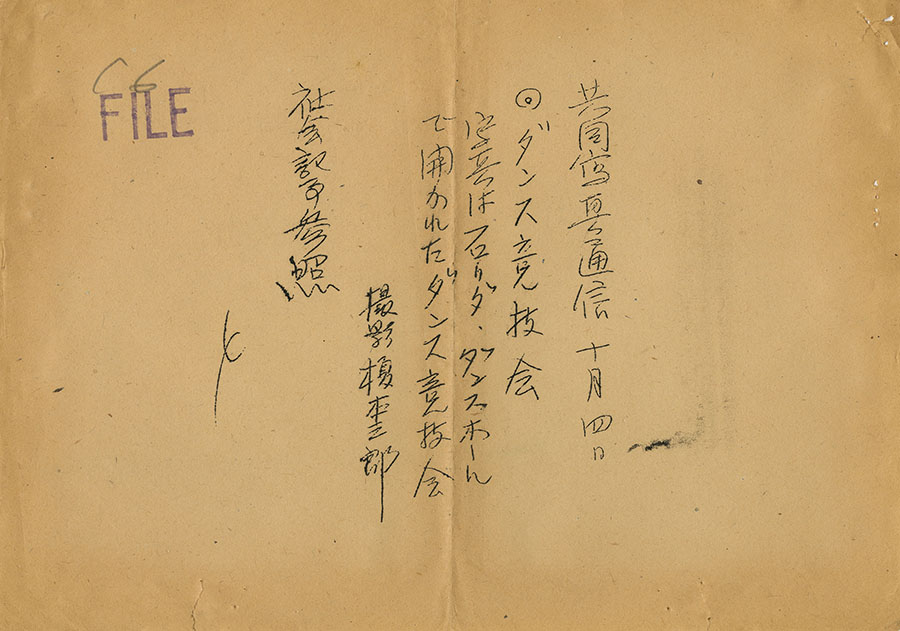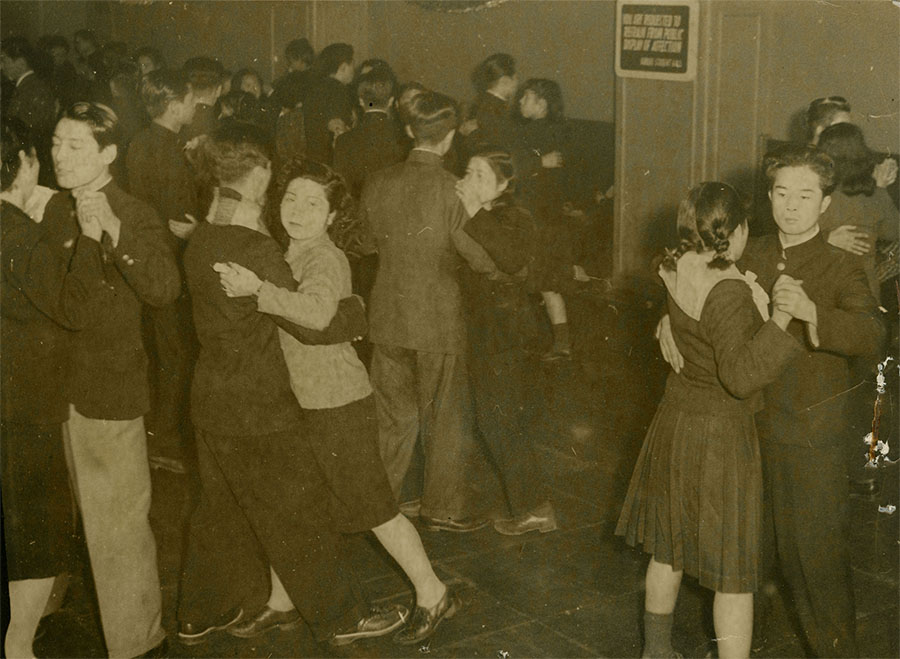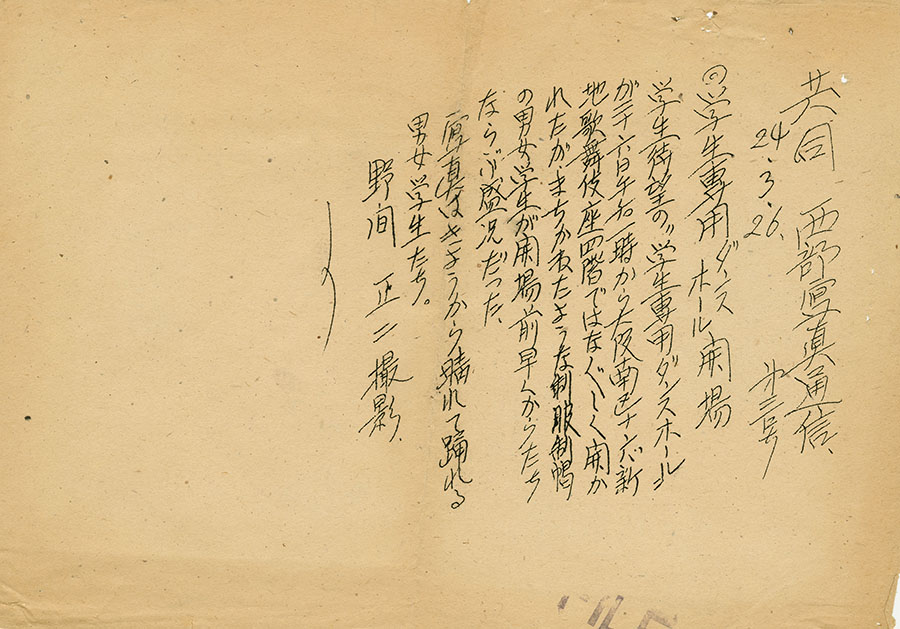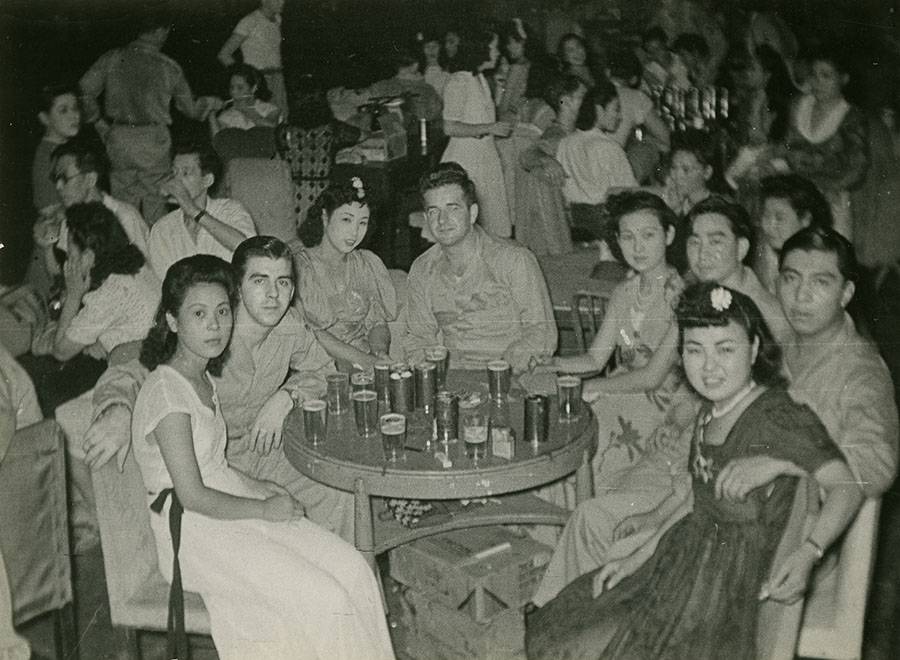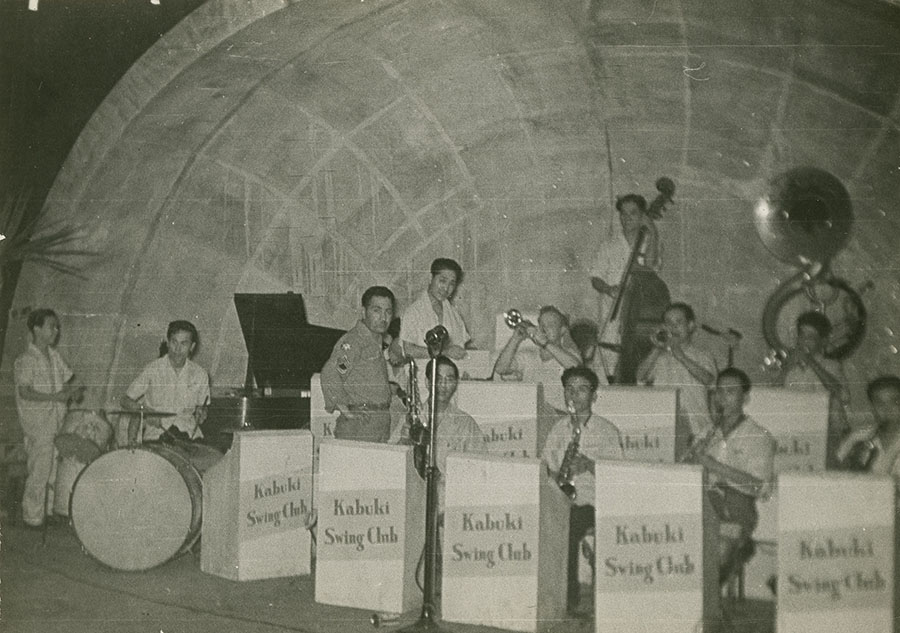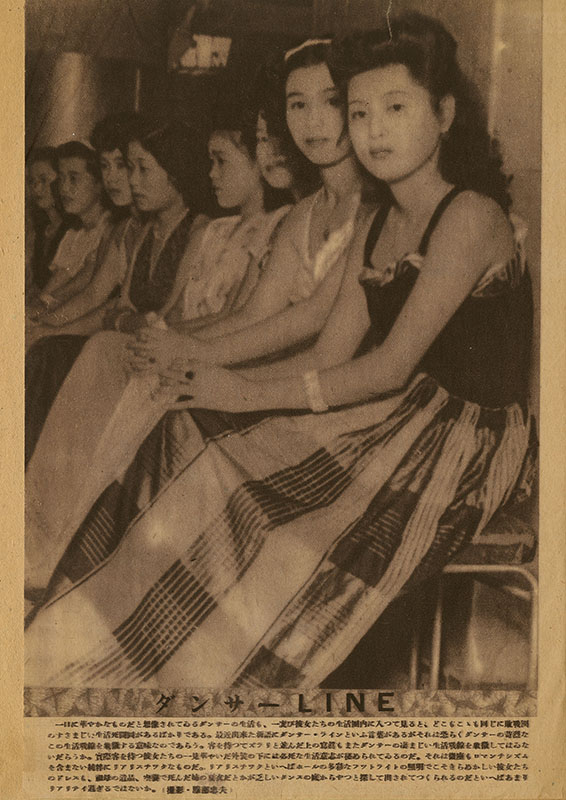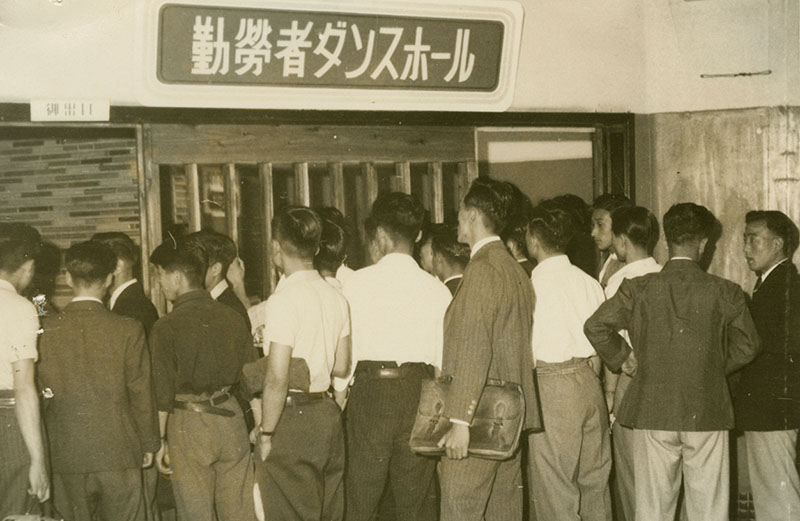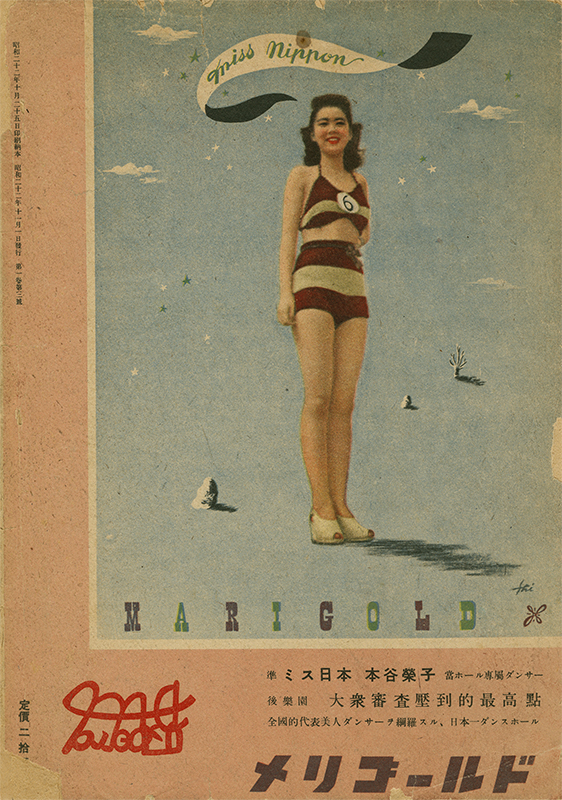Dance Halls
Dance halls, and the jazz bands that played there, were a common form of entertainment for the Japanese and for American military personnel during the Occupation. Particularly popular were the taxi dance halls, a concept that was invented in the United States and introduced to Japan in the 1920s. Using a ticket-a-dance system, the “taxi dancers” (like a taxi driver who provided a specific service for a specific period of time) would dance with any man who was willing to pay the price. Many of the taxi dancers were desperate to make a living. Some expressed regret that before the war, they danced to perfect the art, but after the war, it was all about money.
Dansu [Dance], Vol. 1, Issue 1, March 1947
"Round-Table Discussion: Trends in the Dancing Profession, Past and Present"
This article was reviewed by the Civil Censorship Detachment (CCD) for possible violations of the Code for the Japanese Press. Following CCD procedures, the censorship examiner translated the objectionable portion of the article into English for his supervisor, who would make a final determination about censorship action. The gallery proof of the article with censorship markings and the censorship document are seen here side-by-side. The following statements were marked for possible deletion: “Yoshimizu [chair of the Tokyo dancers’ union]: ‘Formerly, they were earnest to improve their dancing, so they practiced hard. Now they only think of tickets.’ “Kaiyama [an old-school taxi dancer]: ‘They were spoiled by the Occupation Army.’”
Dansu [Dance], Vol 1., Issue 2, August 1947
“Q&A with Dancers”
In this Q&A session, dancers were asked why they had become dancers, what kind of customers they liked and disliked, what they enjoyed most about dancing, and what was most distasteful. In almost every case, the dancer felt compelled to dance to make a living. One women wanted to help her sister pursue higher education (beyond grade school). One woman said that she and her family had lived through the firebombing three times and could no longer continue the family business; she was forced to support the entire family. One dancer said that she danced half for money and half because of her passion for dancing.
Fotogurafī [Photography], Vol. 1, Issue 5. November 1949
“Dancer Life” was a photographic essay that depicted a day in the life of a taxi dancer. According to the photographer, Yuri is 22 years old and was born in Hokkaido. She is one of those people who was tormented by the war. While her grandfather had a kimono store and she had a comfortable upbringing, the wartime controls imposed by the government forced her family to move to Tokyo. Her father tried to provide the best education for her. . . . After graduation, she worked at a government agency. . . . With inflation, she soon had to work at the agency during the day and at a cabaret at night. . . . More than having two jobs, what was very hard for her was the harsh criticism from her coworkers at her day job. Soon she started to work only at night. Yuri is seen waiting in line for flour rations (photo 5), enjoying Western movies (photo 8), and meeting her friend (photo 9). Her days are long. She leaves for work at 2:00pm and arrives home after 1:00am.
Kyōdō News Agency Photographs, March 1949
Students wearing school uniforms dancing in a student-only dance hall on opening day.
Ball Room, vol.1, Issue 1, January 1947
Though entitled, Ballroom, this magazine was not limited to ballroom dancing. It included articles on dance halls and dancers of all kinds.
Dansu [Dance], Vol 1., Issue 2, August 1947
The Oasis of Ginza was a popular night spot for American GIs. This advertisement noted that from 2:00pm to 6:00pm the dance hall was open to Japanese only.
Kyōdō News Agency Photographs, June 1949
Workers waiting to attend the opening of a new workers-only dance hall.

